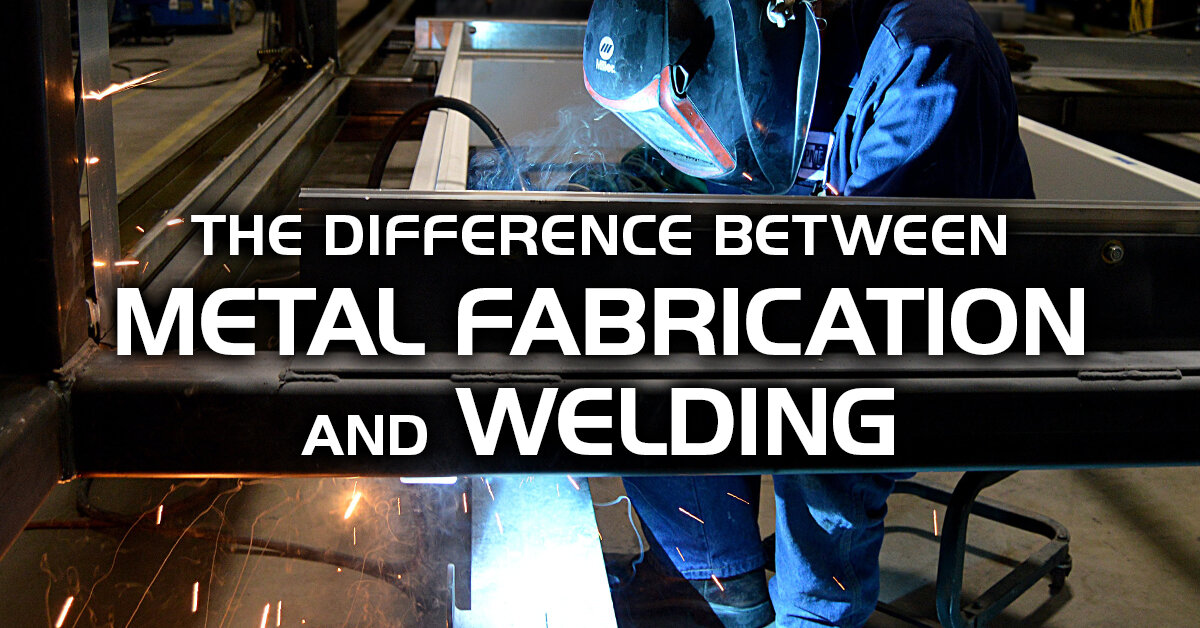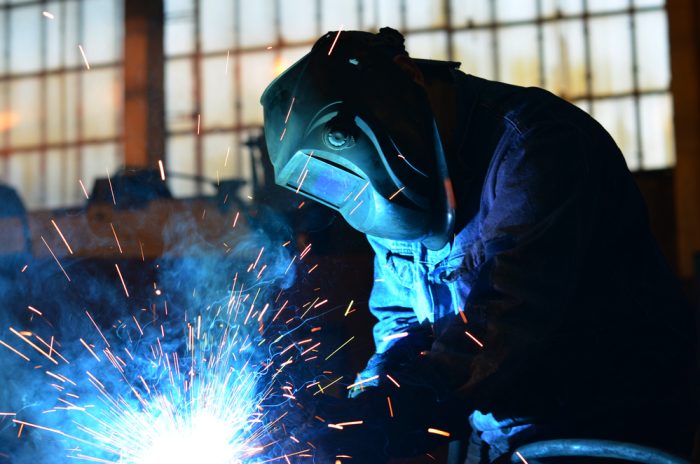Solutions by Montana Mobile Welding and Repair Belgrade prevent porosity and distortion in welding
Common Welding Repair Service Issues and Exactly How to Address Them Effectively
Welding repair work usually experience a range of concerns that can endanger the integrity of the final product. Common problems consist of inadequate penetration, porosity, and misalignment, to name a few. Each flaw presents one-of-a-kind challenges that call for specific methods for resolution. Comprehending these issues is important for welders aiming to improve their abilities and end results. This discussion will certainly discover these typical welding fixing issues and effective methods to address them.
Inadequate Infiltration
Inadequate infiltration happens when the weld metal falls short to fully fuse with the base product, causing weak joints and potential architectural failings. This issue often stems from inadequate warm input, inaccurate electrode angle, or improper welding speed. Welders may encounter insufficient penetration because of a miscalculation of the necessary criteria for a particular product thickness or type. Furthermore, contamination on the base product's surface can hinder reliable bonding, aggravating the issue. To address poor penetration, welders need to assure proper settings on their devices and keep a clean work surface area. Routine evaluation of welds is recommended to recognize any shortages early, permitting prompt corrections and the avoidance of jeopardized architectural integrity in welded settings up.
Porosity
Porosity is a typical issue in bonded joints that shows up as little gas bubbles trapped within the weld metal. This issue can jeopardize the stability of the weld, resulting in reduced toughness and potential failure under anxiety. Belgrade Fabrication. Porosity generally develops from contamination, dampness, or improper welding methods, which permit gases to leave right into the liquified weld pool. To attend to porosity, welders need to ensure proper surface area prep work, preserve a tidy functioning setting, and utilize appropriate welding criteria. In addition, choosing the ideal filler material and shielding gas can mitigate gas entrapment. Routine evaluation and screening of welds can aid determine porosity early, guaranteeing prompt restorative activities are taken, therefore maintaining the top quality and reliability of the welded framework
Misalignment
Misalignment in welding can develop from numerous aspects, consisting of improper configuration and thermal expansion. Recognizing the origin causes is crucial for reliable resolution. Several correction methods are offered to straighten components and assure structural stability.
Reasons for Imbalance
Welding misalignment usually originates from a selection of underlying problems that can compromise architectural integrity. One main cause is inappropriate fit-up of parts before welding, which can bring about voids and unequal surface areas. Variations in thermal expansion during the welding procedure can likewise cause distortion, specifically if the materials being signed up with have different coefficients of development. Furthermore, insufficient securing and fixturing might fail to hold components safely in area, leading to motion throughout welding. Poorly conserved equipment, including welding equipments and devices, may present disparities in the weld grain, more contributing to imbalance. Finally, driver mistake, originating from insufficient training or experience, can additionally play a significant role in producing misaligned welds.
Improvement Methods Readily Available
Addressing misalignment properly needs a mix of rehabilitative strategies tailored to the certain concerns at hand. One typical approach is using jigs or components to hold parts in the proper placement during welding, making certain constant alignment. In addition, preheating the materials can assist minimize distortion and improve fit-up. For significant misalignment, mechanical adjustment methods, such as utilizing hydraulic jacks or clamps, can be employed to deal with the position before welding. Post-weld heat treatment might likewise be essential to eliminate stress and anxieties brought on by misalignment. Cautious evaluation and adjustment during the configuration stage can protect against misalignment problems from becoming significant issues, promoting a smoother welding procedure and enhancing total architectural honesty.
Distortion
Distortion is a typical difficulty in welding that can develop from numerous aspects, consisting of unequal cooling and heating. Understanding the reasons for distortion is important for executing effective avoidance methods. Addressing this concern not just boosts structural integrity however also boosts the overall top quality of the weld.
Root causes of Distortion
When subjected to the extreme warmth of welding, materials frequently go through changes that can cause distortion. This phenomenon largely emerges from thermal development and contraction during the welding procedure. As the weld area warms up, the material expands; upon air conditioning, it contracts, which can produce internal anxieties. Additionally, irregular home heating across a workpiece can aggravate these stress and anxieties, causing bending or flexing. The kind of material also plays a significant role; steels with varying thermal conductivity and coefficients of expansion may respond differently, leading to unpredictable distortions. Poor joint style and poor fixturing can add to misalignment throughout welding, enhancing the chance of distortion. Comprehending these reasons is essential for reliable welding fixing and prevention strategies.
Prevention Techniques
Efficient avoidance techniques for distortion throughout welding concentrate on managing warm input and making sure proper joint design. Keeping a regular warm input aids to reduce thermal growth and tightening, which can cause distortion. Utilizing techniques such as pre-heating the workpiece can likewise decrease the temperature slope, promoting uniform home heating. Furthermore, choosing suitable joint layouts, such as T-joints or lap joints, can boost security and lower stress and anxiety concentrations. Carrying out correct fixturing to protect the workpieces in position even more aids in maintaining alignment throughout the welding process. Finally, staggered welding series can disperse warmth a lot more equally, protecting against local distortion. By applying these strategies, welders can significantly decrease the likelihood of distortion and enhance the general top quality of their welds.
Fracturing
Fracturing is Recommended Reading a common issue experienced in welding fixings, often resulting from various aspects such as improper cooling rates, material choice, or insufficient joint preparation. The occurrence of fractures can significantly jeopardize the integrity of the weld, causing prospective failings during operation. To resolve this problem, welders should initially evaluate the root creates, ensuring that materials are suitable and suitably picked for the certain application. In addition, controlling the air conditioning rate throughout the welding procedure is crucial; rapid air conditioning can generate stress and anxiety and cause cracking. Appropriate joint layout and preparation likewise add to reducing the risk. Implementing these approaches can enhance weld top quality and durability, ultimately lowering the likelihood of fracturing in finished weldments.

Insufficient Combination
A considerable problem in welding repairs is insufficient blend, which takes place when the weld steel does not effectively bond with the base material or previous weld passes - Belgrade. This problem can cause weaknesses in the joint, potentially compromising the integrity of the bonded structure. Variables adding to incomplete fusion include not enough heat input, improper welding strategy, and contamination of the surfaces being joined. To resolve this problem effectively, welders try these out need to guarantee proper pre-weld cleansing and surface preparation, as well as readjust their welding specifications to accomplish sufficient penetration and blend. Normal evaluation throughout the welding procedure can also aid determine incomplete fusion early, permitting timely restorative actions to improve the total high quality of the weld
Overheating
While welding fixings can enhance architectural honesty, overheating provides a considerable obstacle that can cause product degradation. Excessive warm throughout welding can modify the mechanical properties of metals, causing reduced strength, enhanced brittleness, and warping. This sensation is particularly crucial in high-stress applications where architectural dependability is extremely important. Determining overheating can involve visual examinations for discoloration or distortion, in addition to checking temperature level during the welding procedure. To alleviate the risks linked with overheating, welders must utilize appropriate methods, such as regulating warmth input, readjusting traveling speed, and using suitable filler products. Furthermore, carrying out pre- and post-weld heat treatments can aid restore product buildings and improve the general top quality of the fixing, making certain long-lasting efficiency and safety and security.
Regularly Asked Concerns
What Are the Usual Indications of a Welding Problem?

How Can I Evaluate My Welds for Quality?
To evaluate welds for top quality, one can utilize visual inspections, ultrasonic testing, and radiographic methods. Each method guarantees structural stability, determines defects, and confirms adherence to specified criteria, inevitably enhancing the reliability of the welded joints.
What Safety Precautions Should I Take While Welding?
When welding, one must focus on security by wearing proper personal protective tools, ensuring correct ventilation, securing flammable materials away, preserving a clean office, and being mindful of surroundings to stop injuries and accidents.
Can I Repair a Weld Without Redoing the Entire Joint?
Repairing a weld without remodeling the whole joint is possible, depending on the damages (Belgrade Fabrication). Methods such as grinding, including filler material, or utilizing a welding process can effectively resolve details problems while maintaining the bordering framework
What Tools Are Important for Effective Welding Fixes?
Necessary tools for effective welding fixings click here now include a welding equipment, cord brush, mill, safety gear, clamps, and filler materials. Each device plays an important function in making certain quality and security during the repair service process. Porosity normally occurs from contamination, dampness, or improper welding methods, which enable gases to escape into the liquified weld pool. Badly conserved equipment, consisting of welding machines and tools, may present incongruities in the weld grain, more contributing to imbalance. When subjected to the intense warmth of welding, products usually undergo changes that can lead to distortion. Fracturing is a common issue encountered in welding repairs, usually resulting from various aspects such as inappropriate air conditioning rates, material selection, or inadequate joint prep work. A significant concern in welding repairs is insufficient fusion, which happens when the weld metal does not appropriately bond with the base material or previous weld passes.